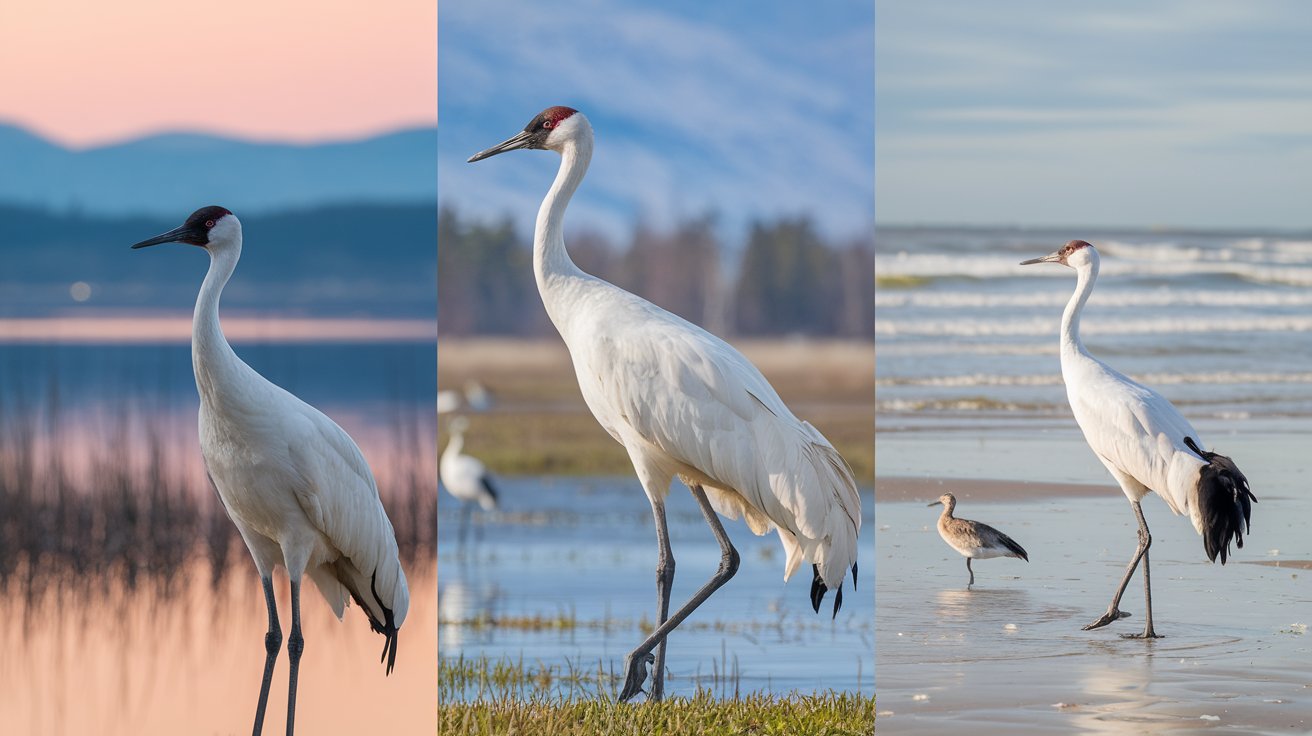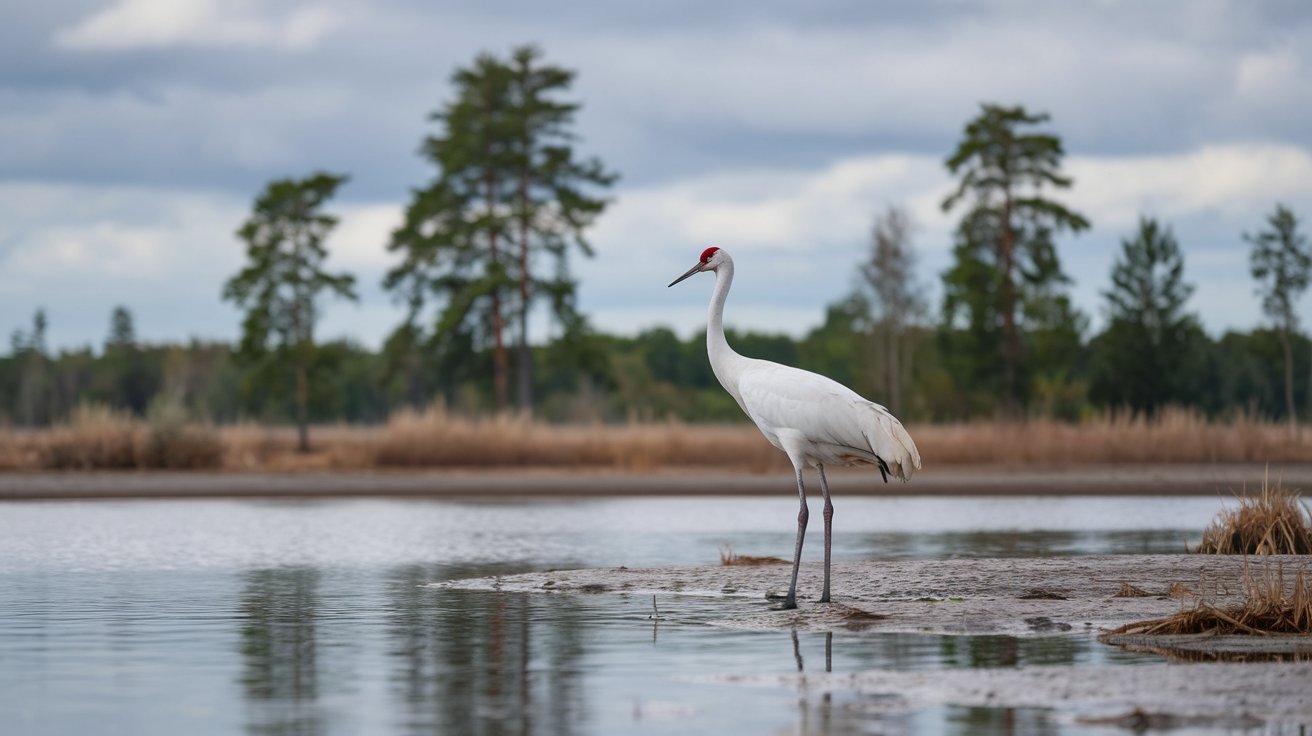
The whooping crane, an elegant and iconic bird native to North America, is critically endangered due to habitat loss and human interference. These cranes depend on specific wetland habitats for breeding and wintering, but widespread drainage of wetlands for agriculture and urban development has significantly reduced their natural range. Historical overhunting further decimated their population, which fell to fewer than 20 individuals in the wild by the 1940s. Today, their recovery is hindered by threats such as collisions with power lines, predation, and habitat disturbances caused by climate change and human activities.
Once widespread across the continent, their population declined drastically in the 20th century, primarily due to habitat destruction as wetlands and grasslands were drained for agriculture and development. Overhunting further contributed to their decline.

Reasons Why Whooping Crane Are Endangered
1-Habitat Loss:
Wetlands and marshes, essential for their breeding and wintering, have been drained and converted for agriculture and urban development.
Climate Change:
Sea-level rise threatens coastal wetlands, which serve as vital habitats for these birds.
Collisions with Power Lines:
Whooping cranes often migrate long distances, and their flight paths intersect with human infrastructure, leading to fatal collisions.
